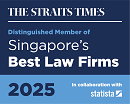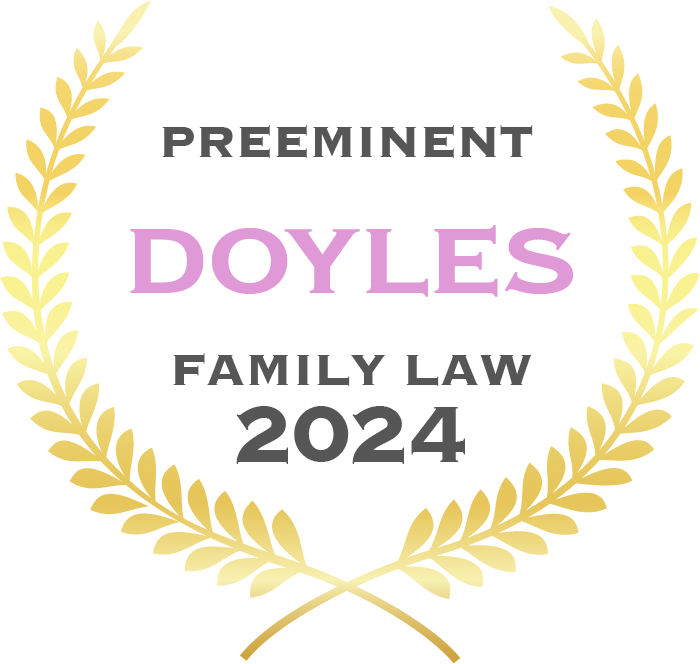COSCO Shipping Specialized Carriers Co, Ltd v PT OKI Pulp & Paper Mills (COSCO v PT OKI)[1]
What is the ambit and scope of the phrase “arising out of or in connection with this contract” in the context of arbitration and dispute resolution agreements? This is a common phrase and on the face of the express language, the parties must have intended that the agreement should cover disputes beyond the terms of the contract. However, the extent to which this coverage extends has vexed the common law courts (and continues to do so).
The Singapore Court of Appeal has taken the opportunity in this case to lay down the tests by which the limits of this extended scope ought to be delineated, as well as how possible defences/ competing claims should be dealt with.
Background Facts
The dispute arose from contracts of carriage contained in bills of lading that stipulated that “any dispute arising out of or in connection with this Contract, including any question regarding its existence, validity or termination shall be referred to and finally resolved by arbitration in Singapore …”. The bills of lading also incorporated a negligent navigation contractual defence.
After loading the first respondent’s (“PT OKI”) cargo, the appellant’s (“COSCO”) vessel allided[2] with the trestle bridge of the jetty from which the loading had taken place, causing extensive damage.
PT OKI commenced a tortious claim in Indonesia against COSCO for the damage to the bridge.
COSCO commenced several proceedings in Singapore, in particular;
- a limited action,
- arbitration proceedings against PT OKI inter alia for breach of the safe port warranty and raising the contractual defence of negligent navigation against a tortious claim by PT OKI.
- an anti-suit injunction against COSCO on the basis that the Indonesian proceedings were in breach of the arbitration agreements.
PT OKI did not participate in the anti-suit injunction hearing. The first instance judge disallowed the anti-suit injunction leading to this appeal by COSCO.
Issues to be determined
The issues that arose for determination in the appeal were:
- what are the matter(s) or dispute(s) which the parties have raised or foreseeably will raise in the foreign court proceedings; and
- whether such matter(s) or dispute(s) fall within the scope and ambit of the arbitration agreements.
Decision of the Court on the law
The 2 stage test The Court of Appeal held that a unified approach was to be adopted in considering the matters in dispute whether in the context of a stay or an anti-suit injunction[3]. The unified approach involved a 2-stage test, as follows:
- at the first stage, the court should first determine what are the matter(s) or dispute(s) which the parties have raised or foreseeably will raise in the foreign court proceedings (the “Identification Issue”); and
- at the second stage, the court must then ascertain whether such matter(s) or dispute(s) fall within the scope and ambit of the arbitration agreement (the “Scope Issue”)[4].
The Identification Issue In approaching the Identification Issue, the court must ascertain the substance of the dispute or disputes between the parties. This involves looking at the claimant’s pleadings, but recognising that the formulations in those pleadings may be aimed at avoiding a reference to arbitration by artificial means. The court must consider the underlying basis and true nature of the issue or claim[5].
The tests In determining what are the matters in dispute between the parties, and whether these matters fall within the scope of the arbitration agreement, various tests may be employed[6]:
- The Causative Connection Test, where the claim arises solely in tort but is causatively connected with the relationship created by the contract and the rights and obligations arising therefrom[7]
- The Parallel Claims Test, where there were parallel claims in tort and contract, e.g. for breach of a duty of care[8];
- The Closely Knitted Test, where there is a sufficiently close connection between the tortious claim and the contractual claim such that the resolution of the contractual issue is necessary for a decision on the tortious claim, or that the contractual and tortious disputes are so closely knitted together on the facts that an agreement to arbitrate on one can properly be construed as covering the other[9].
The Closely Knitted Test did not only apply where the non-contractual claim may be recast as a contractual claim. It also applied where there was a non-contractual claim and contractual cross-claims under the contract[10].
There can be no universal test that applied to all such disputes since the ascertainment of the relevant “connection” would invariably be a highly fact-specific inquiry that required the court to consider all relevant circumstances. The existing tests articulated above are not to be regarded as exhaustive, given the myriads of facts that may be presented[11].
Consideration of possible defences The exercise also involves a consideration of the defences, if any, and all reasonably foreseeable defences to the claim or part of the claim. The application for an anti-suit injunction is often made at a preliminary stage before any substantive defence has been filed. Similarly, an application for a stay by reason of an arbitration agreement is made before pleadings on the merits is filed. Therefore, regard must be had not only to the formulation of the pleaded claims in the foreign proceedings but also the defences or reasonably foreseeable defences that may be raised as well as cross-claims relating to the same matter, These may be skeletal. The court is ultimately concerned with identifying the substance of the controversy between the parties and it is clear from the authorities cited above that this cannot be treated as synonymous or limited to the claimant’s pleaded cause of action[12].
The consideration of possible defences does not extend to a consideration of merits. The merits of an identified or reasonably foreseeable defence and/or cross-claim were generally irrelevant to the inquiry, as the genuineness or merits of the dispute was a matter which should properly be left to the arbitral tribunal to assess. This aligned the law governing anti-suit injunctions with the position in applications for a stay of proceedings based on an exclusive jurisdiction clause and under an arbitration agreement[13]. However, the party seeking the anti-suit injunction must not be acting abusively by raising defences/ competing claims that are entirely hopeless or doomed to fail[14].
The Scope Issue The arbitration agreement should be construed with common sense and in a manner consistent with rational businessmen. The interpretation of an arbitration clause will be affected by its commercial background and that commercial men are assumed to have entered into agreements to achieve some rational commercial purpose and an understanding of this purpose will influence the way in which one interprets their language. There was a need for judicial common sense in the approach to interpretation, and emphasised this point particularly in the context where contractual cross-claims arose out of the same incident. An arbitration agreement should be construed like any other commercial agreement. The fundamental principle of documentary interpretation is to give effect to the intention of the parties as expressed in the document. Commercially logical and sensible construction is to be preferred over another that is commercially illogical[15].
Decision of the Court on the facts
It was evident that the tortious claim, the contractual defence of negligent navigation and the cross-claim for breach of the Safe Port Warranty[16] all shared a common connection – namely, what was the cause of the allision? The answer to that common question had a direct impact on the competing claims and defence. The “causative connection” inquiry required an examination of the nature of the tortious claim in tandem with the contractual defence and not the contracting capacities of the parties. The fact that PT OKI’s claim was brought in its capacity as a jetty owner and not as a shipper did not change the fact that the allision occurred in the performance of the contract of carriage which also provided for the contractual defence of “errors of navigation”[17].
As stated earlier, the merits of an identified or reasonably foreseeable defence and/or cross-claim were generally irrelevant to the inquiry (see [88] above). In the present case, it sufficed for the appellant to identify that the defence of “errors of navigation” was contractually provided for and there appeared to be authorities which supported the assertion of such a defence. It was unnecessary to examine whether such a defence satisfied the prima facie standard.
Accordingly, the appeal was allowed, and the anti-suit injunction was granted.
Conclusion
The Singapore courts do not adopt a presumption that the parties must have intended for all their competing claims to be decided in the same forum. Instead, the issue stands to be determined on the nature of the competing claims and the express language of the dispute clauses. The Singapore courts accept forum fragmentation as a fact of life with dispute resolution agreements, as demonstrated by the recent decision in Asiana Airlines v Gate Gourmet[18].
For further information, please contact:
S Suressh
Partner & Head, International Arbitration
Suressh@harryelias.com
+65 6361 9883
Andy Lem
Partner & Co-Head, Civil and Commercial Litigation
AndyLem@harryelias.com
+65 6361 9340
[1] [2024] SGCA 50
[2] i.e. the running of a ship upon a stationary object such as a stationary ship, jetty, or ,as in this case, a bridge
[3] Ibid [69] and [70]
[4] Ibid [68]
[5] Ibid [71] and the authorities cited therein
[6] Ibid 74] and [75]
[7] From The Pola Devora [2021] 1 WLR 5475 at [61]
[8] Ibid at [37]
[9] From The Angelic Grace [1995] 1 LLR 87 at [89]
[10] COSCO v PT OKI [78]
[11] Ibid [79]
[12] Ibid [72]
[13] Ibid [88]
[14] Ibid [93]
[15] Ibid [85] and the cases cited therein
[16] See paras 5 and 6 above
[17] Ibid [99] and [100]
[18] [2024] SGCA(I) 8 at [88]







